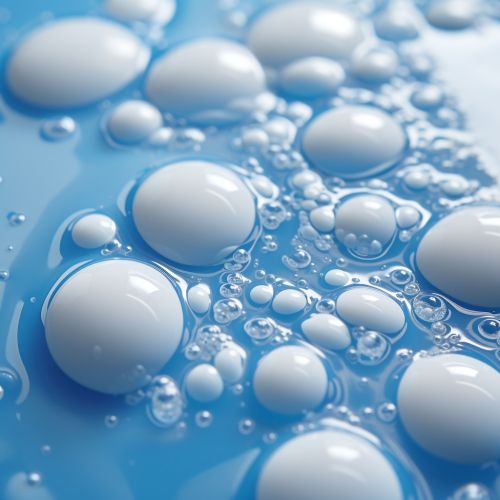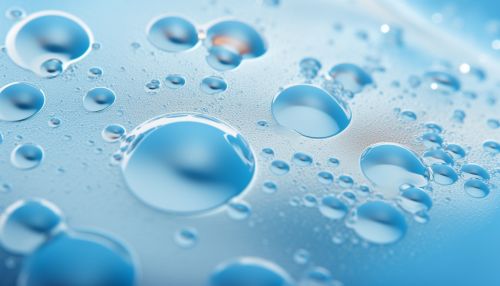Foaming
Introduction
Foaming is a process that involves the formation of gas bubbles in a liquid or solid substance, resulting in a foam. The process is a complex one that involves a number of physical and chemical interactions, and is observed in a variety of natural and industrial settings. Foaming can be a desirable or undesirable phenomenon, depending on the context, and understanding the mechanisms behind it is crucial in many scientific and industrial fields such as chemical engineering, food science, and materials science.
Foaming Process
The foaming process begins when gas is introduced into a liquid or solid. This can occur naturally, such as when yeast ferments sugar and produces carbon dioxide in bread dough, or it can be induced artificially, such as when a gas is injected into a liquid in a foam fractionation process.
The gas forms bubbles, which are surrounded by a thin layer of liquid or solid. The bubbles then rise to the surface, where they can either burst and release the gas, or remain and form a foam. The stability of the foam – that is, how long it lasts before the bubbles burst – depends on a number of factors, including the properties of the liquid or solid, the type of gas, and the conditions under which the foaming occurs.
Factors Influencing Foaming
Several factors can influence the foaming process and the properties of the resulting foam. These include:
- Surface Tension: The surface tension of the liquid plays a crucial role in the formation and stability of foam. Higher surface tension leads to more stable foams, as the liquid is more resistant to the gas bubbles breaking through the surface.
- Viscosity: The viscosity of the liquid also affects the foaming process. More viscous liquids tend to form more stable foams, as the thicker liquid is more resistant to the gas bubbles rising and bursting.
- Temperature: The temperature can also affect the foaming process. Higher temperatures can increase the rate of gas production and bubble formation, leading to more foam. However, higher temperatures can also decrease the stability of the foam, as the increased thermal energy can cause the bubbles to burst more quickly.
- pH: The pH of the liquid can affect the foaming process. Certain substances, such as proteins, can stabilize foam at certain pH levels.


Applications of Foaming
Foaming is a crucial process in many industries, and understanding and controlling it is often key to producing high-quality products.
- Food and Beverage Industry: Foaming is used in the food and beverage industry to create certain textures and appearances. For example, the foam on top of a beer or a latte is created by a foaming process. In baking, foaming is used to create the light, airy texture of breads and cakes.
- Chemical Industry: In the chemical industry, foaming is used in processes such as foam fractionation, where it is used to separate different components of a liquid.
- Materials Science: In materials science, foaming is used to create lightweight, strong materials. For example, foam metals are created by introducing gas into molten metal, creating a foam that is then solidified.
Problems Caused by Foaming
While foaming can be a useful process, it can also cause problems in certain situations. For example, in industrial processes, unwanted foaming can lead to inefficiencies and equipment damage. In the food and beverage industry, unwanted foaming can affect the quality and appearance of products. In such cases, anti-foaming agents may be used to prevent or reduce foaming.
Anti-Foaming Agents
Anti-foaming agents, or defoamers, are substances that are used to prevent or reduce foaming. They work by reducing the surface tension of the liquid, making it harder for bubbles to form and for foam to stabilize. Anti-foaming agents can be oil-based, water-based, or silicone-based, and are used in a wide range of industries, from food and beverage production to oil refining and wastewater treatment.
Conclusion
Foaming is a complex process that is crucial in many scientific and industrial fields. Understanding the factors that influence foaming and how to control it can lead to improvements in product quality and process efficiency. Despite its ubiquity, there is still much to learn about the foaming process and its applications, making it a rich area for further research.
